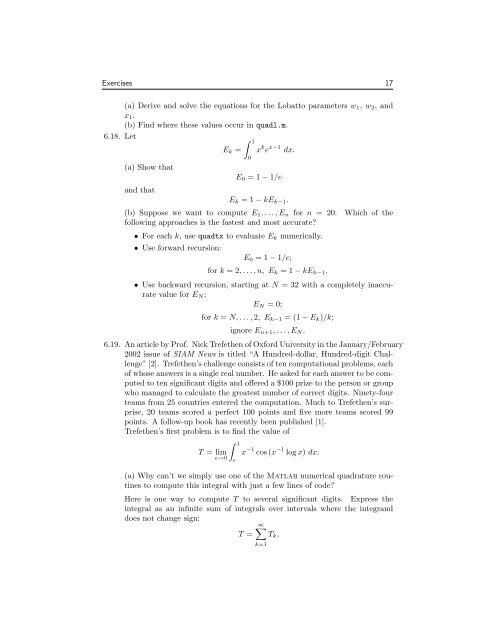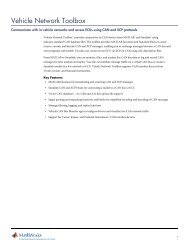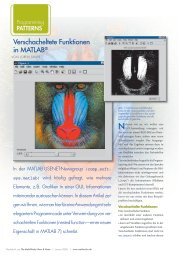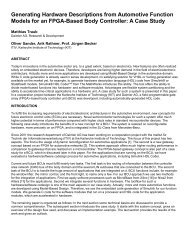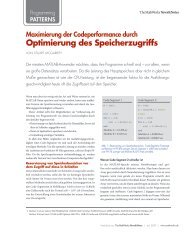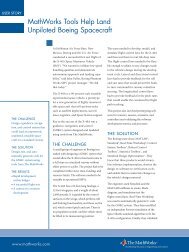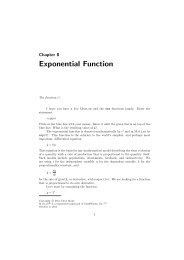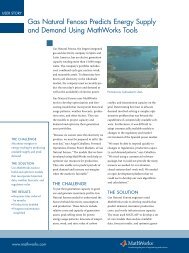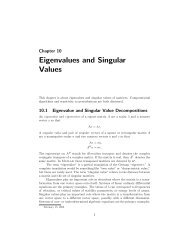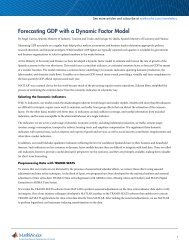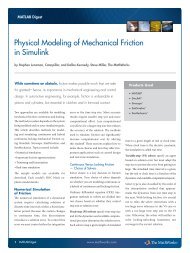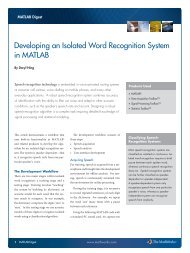Chapter 6. Quadrature - MathWorks
Chapter 6. Quadrature - MathWorks
Chapter 6. Quadrature - MathWorks
You also want an ePaper? Increase the reach of your titles
YUMPU automatically turns print PDFs into web optimized ePapers that Google loves.
Exercises 17<br />
(a) Derive and solve the equations for the Lobatto parameters w1, w2, and<br />
x1.<br />
(b) Find where these values occur in quadl.m.<br />
<strong>6.</strong>18. Let<br />
1<br />
Ek = x k e x−1 dx.<br />
(a) Show that<br />
and that<br />
0<br />
E0 = 1 − 1/e<br />
Ek = 1 − kEk−1.<br />
(b) Suppose we want to compute E1, . . . , En for n = 20. Which of the<br />
following approaches is the fastest and most accurate?<br />
• For each k, use quadtx to evaluate Ek numerically.<br />
• Use forward recursion:<br />
E0 = 1 − 1/e;<br />
for k = 2, . . . , n, Ek = 1 − kEk−1.<br />
• Use backward recursion, starting at N = 32 with a completely inaccurate<br />
value for EN :<br />
EN = 0;<br />
for k = N, . . . , 2, Ek−1 = (1 − Ek)/k;<br />
ignore En+1, . . . , EN.<br />
<strong>6.</strong>19. An article by Prof. Nick Trefethen of Oxford University in the January/February<br />
2002 issue of SIAM News is titled “A Hundred-dollar, Hundred-digit Challenge”<br />
[2]. Trefethen’s challenge consists of ten computational problems, each<br />
of whose answers is a single real number. He asked for each answer to be computed<br />
to ten significant digits and offered a $100 prize to the person or group<br />
who managed to calculate the greatest number of correct digits. Ninety-four<br />
teams from 25 countries entered the computation. Much to Trefethen’s surprise,<br />
20 teams scored a perfect 100 points and five more teams scored 99<br />
points. A follow-up book has recently been published [1].<br />
Trefethen’s first problem is to find the value of<br />
1<br />
T = lim x<br />
ɛ→0<br />
−1 cos (x −1 log x) dx.<br />
ɛ<br />
(a) Why can’t we simply use one of the Matlab numerical quadrature routines<br />
to compute this integral with just a few lines of code?<br />
Here is one way to compute T to several significant digits. Express the<br />
integral as an infinite sum of integrals over intervals where the integrand<br />
does not change sign:<br />
∞<br />
T = Tk,<br />
k=1


